Highpower lasers in the energy industry
The hole story: Femtosecond manufacturing improves automobile fuel efficiency
Foro Energy is commercializing highpower lasers in the oil, gas, geothermal, and mining industries with a unique capability and hardware platform that uses fieldpackaged highpower fiber lasers and fiberoptic cables to transmit the laser power over long distances. This laser power is then combined with mechanical tools to provide enhanced and potentially breakthrough performance and capabilities.
These energy industries spend in excess of $100 billion per year to extract the natural resources that power the economy, employing a conventional technology toolkit of mechanical cutters, explosives, chemicals, and high pressures. Foro Energy's mission is to drill and perform a variety of other operations faster, safer, cheaper, and more effectively than today's tools. Upon reaching technology critical mass, highpower lasers potentially will have the same type of impact on the oil, gas, geothermal, and mining industries that is occurring in the automotive, manufacturing, defense, and medical industries.
The company has discovered how to combine the longdistance and highefficiency capabilities of telecommunication fibers with the highpower capabilities of shorter automotive and manufacturing fibers. Many experts thought that this was impossible due to the nonlinear effect of stimulated brillouin scattering (SBS) prevalent in optical fibers. When working with power levels of 20 kW, SBS can cause a significant portion of the laser power to be transmitted backwards through the fiber, resulting in catastrophic damage to optical components as well as the laser itself. This problem was compounded because the onset of SBS has an exponential relationship with power and length. As Secretary of Energy and Physics Nobel Prize Winner Dr. Steven Chu acknowledged:
"Foro has been able to overcome this technical challenge of how to suppress SBS. [...] They've made tremendous progress in being able to send high intensity laser power over long distances through fiber, where many other people thought it was going to be impossible."1
Technologists at the company have successfully engineered a highefficiency optical transmission cable for highpower lasers. Applications at depths of 5,000 feet now have up to 16 kW of optical power available from this transmission cable, with only 20 kW launched at the surface. The output power is highly linear compared to the input power, indicating that no nonlinear effects have reached threshold. The power losses measured in the transmission cable can be attributed entirely to the Rayleigh scattering losses in the fiber. Both shorter and significantly longer transmission cables have passed internal feasibility studies and are in testing or under development.
Integrating this power transmission technology with commercial offtheshelf mechanical drilling equipment is a major engineering challenge because of the highvibration, hightemperature, and highpressure environments found in the oil, gas, geothermal, and mining industries. Thus, Foro Energy has matured a set of firstinclass laser hardware components for operation in these extraordinary environments. As a set, these laser hardware components form a platform "laser power cord" for multiple applications and industries, and are covered by over 3,800 pending patent claims.
One of Foro Energy's initial proofsofconcept to establish that its highpower laser transmission platform could be used with commercial drilling equipment was achieved through the integration of its laser hardware platform with a coil tube drilling rig. This rig was used to successfully laser mechanically drill under the ground for extended periods of time.
Lasermechanical drilling of ultrahard rocks is one of the major applications for high power lasers in the energy and mining industries. Conventional mechanical drill bits cut softer rocks with stresses created by rotating a cutting surface with high weightonbit (WOB). Unfortunately, ultrahard (i.e., high compressive strength) rocks inherently do not yield efficiently to even the most advanced mechanical cutters. The resulting slow drilling and short bit lifetimes result in poor performance and high expense. So, they developed a process that uses the laser to first destroy the rock's strength, allowing a conventional mechanical bit to then remove the softened rock. The beam that is used to destroy the rock surface at the bottom of the borehole is shown in FIGURE 1 during a system test firing. This lasermechanical drilling process enables: i) step changes in drilling rate (24x); ii) extremely low WOB (<1000 lbs); iii) extremely low torque (<300 ftlbs); iv) longer bit life; and thus, v) lower drilling cost per foot.
FIGURE 4. The 20 kW downhole fiber optic connector.
The optical transmission cable is an optical fiber packaged in a multiwall stainless steel tube to protect it in the highpressure, hightemperature, high shock, and highabrasion downhole environment. The stainless steel tube is designed to withstand 20,000 psi of pressure, and the fiber is packaged in a hightemperature gel to support the fiber in a vertical position and dampen highg shocks. The transmission cable met all of the harsh environmental requirements necessary for a fieldready power transmission system. The packaged fiber was successfully tested at 400°F for a period of 24 hours with up to 20 kW of laser power launched into the fiber. The packaged fiber then successfully withstood 200 g of vibration for a period of 24 hours. With up to 20 kW of power being launched into the fiber throughout these tests, there were no significant changes observed in the output power, the output mode, or the output numerical aperture.
A highpower connector terminates the optical fiber downhole and meets all of the requirements necessary to perform lasermechanical drilling in the field. The connector was designed to operate at 20 kW power levels, at elevated temperatures, in a highg shock environment, and without the need for liquid cooling. The connector was thermally compensated for the hightemperature environment, as well as mechanically compensated for the high shock environment. The connector successfully delivered 20 kW laser power to the downhole tool in the borehole at high ambient temperatures and in a highshock environment.
Prior to the downhole tests, the connector was operated for several hours at 20 kW and up to 400°F with no external cooling. The connector was mounted on the distal end of a long optical fiber to enable the output power, mode shape, and numerical aperture to be monitored during the tests. After several hours of operation, all of the laser output characteristics were unchanged validating the robustness of the thermalmechanical design.
The connector was first tested with a vibration table and a drop test prior to being operated for 24 hours inside of the drilling system under 200 g's of constant vibration and shock. The vibration table subjected the connector to a 250 g rms vibration for several hours. The transmission characteristics, mode quality, and NA from the connector were constantly measured and found to be unchanged. The connector was also subjected to a 6ft. drop test onto concrete, this test was repeated multiple times, each time checking the transmission characteristics, mode quality, and NA from the connector. The output beam characteristics were found to be unchanged after this series of g tests, validating the robustness of the mechanical design.
The integrated coil tube lasermechanical drilling system successfully drilled through ultrahard crystalline rock (>30,000 psi unconfined compressive strength). During this test, the power was delivered by the optical transmission cable from the laser to the bottom of the borehole for extended periods of time (FIGURE 5).
FIGURE 5. Borehole drilled at the field drilling test site with the integrated coil tube lasermechanical drilling rig.
Foro Energy setout to break several paradigms, and develop a rugged field ready laser hardware platform that can deliver highpower laser energy over long distances for applications in the oil, gas, geothermal, and mining industries. They have now proven this platform's ability to transmit high laser power over long distances, and established that this platform can meet the harsh environmental requirements of these industries. Integrating this platform into a commercial offtheshelf drilling rig resulted in the drilling of the first subsurface borehole using a lasermechanical drilling system.
They are working with a set of industry partners to develop many other applications for its laser hardware platform in the oil, gas, geothermal, and mining industries.
Foro Energy's successes were made possible by the dedication of a unique team of people made up of engineers from the laser and energy services industries at their Colorado and Texas facilities. Special thanks to both the Colorado School of Mines for its assistance analyzing the rock samples during the process development, and the US Department of Energy ARPAE which provided matched costsharing to develop more economical drilling methods for geothermal wells.
Dr. Mark S. Zediker (mark.zediker@foroenergy.com), Brian O. Faircloth, and Dr. Joel F. Moxley are with Foro Energy, Inc.2, Littleton, Colorado & Houston, Texas.
[1] Interview with Secretary Chu, Feb 24, 2012. This material is based upon work supported by the Department of Energy, ARPAE, under Award Number AR0000044. Disclaimer: This report was prepared as an account of work sponsored by an agency of the United States Government. Neither the United States Government nor any agency thereof, nor any of their employees, makes any warranty, express or implied, or assumes any legal liability or responsibility for the accuracy, completeness, or usefulness of any information, apparatus, product, or process disclosed, or represents that its use would not infringe privately owned rights. Reference herein to any specific commercial product, process, or service by trade name, trademark, manufacturer, or otherwise does not necessarily constitute or imply its endorsement, recommendation, or favoring by the United States Government or any agency thereof. The views and opinions of authors expressed herein do not necessarily state or reflect those of the United States Government or any agency thereof.
[2] Copyright Foro Energy Inc., 2012


